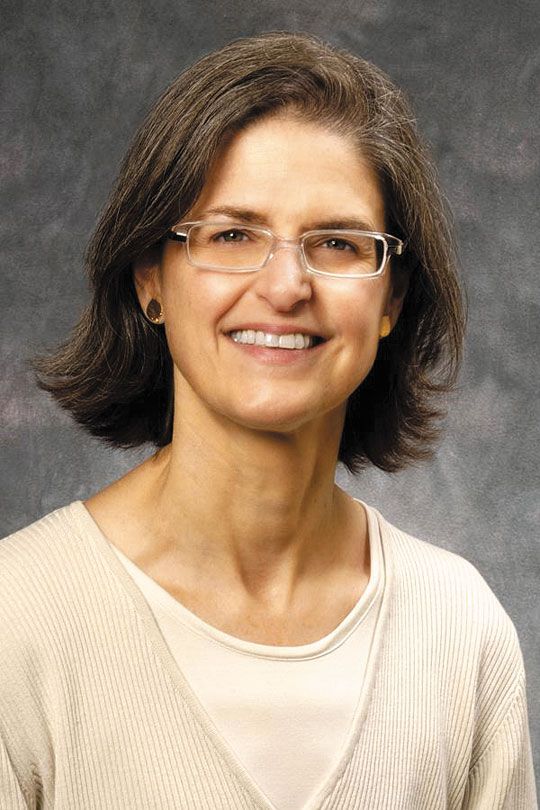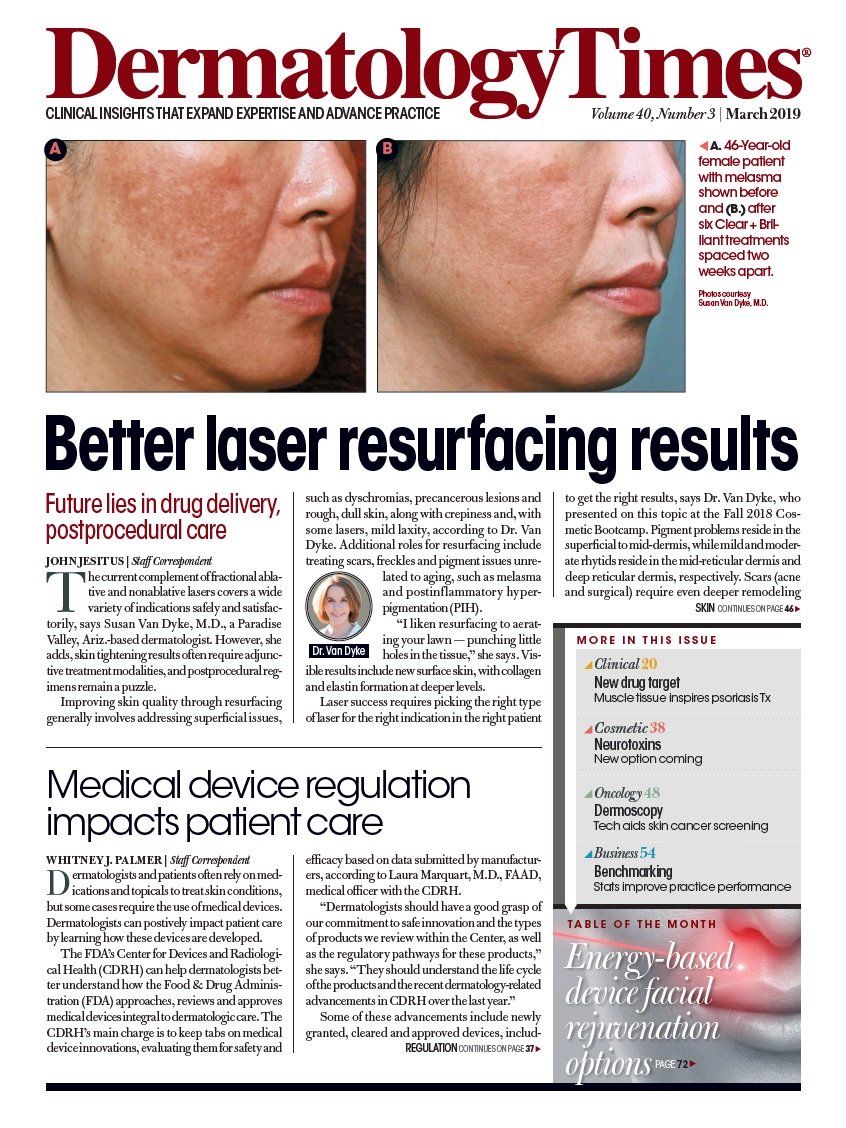- Case-Based Roundtable
- General Dermatology
- Eczema
- Chronic Hand Eczema
- Alopecia
- Aesthetics
- Vitiligo
- COVID-19
- Actinic Keratosis
- Precision Medicine and Biologics
- Rare Disease
- Wound Care
- Rosacea
- Psoriasis
- Psoriatic Arthritis
- Atopic Dermatitis
- Melasma
- NP and PA
- Skin Cancer
- Hidradenitis Suppurativa
- Drug Watch
- Pigmentary Disorders
- Acne
- Pediatric Dermatology
- Practice Management
- Prurigo Nodularis
- Buy-and-Bill
Publication
Article
Dermatology Times
Sustaining a socioeconomically inclusive dermatology practice
Author(s):
Most dermatologists train in a clinical setting that accepts underinsured patients, but only some physicians continue along this path. Elaine Siegfried, M.D. offers her point of view on the pros and cons of working with this population, and discusses how to maintain a socioeconomically inclusive dermatology practice.
The benefits of serving the needy more closely align with the most important factors that contribute to physician job satisfaction, and also minimize burnout. (MonkeyBusinessImages/Shutterstock.com)

Dr. Siegfried is professor of pediatrics & dermatology, Saint Louis University Health Sciences Center, St. Louis, Mo.

Almost all dermatologists train in a clinical setting that accepts underinsured patients. Only a fraction of us continue to practice in an academic setting, and even fewer accept all patients, regardless of ability to pay. I chose this path for a decade after residency, left it for six years in a less inclusive private practice, then returned 10 years ago, for many reasons. A practice that does not exclude patients based on insurance is one that more dermatologists should consider, for many reasons.
The demand for dermatologic care far exceeds the workforce. Our seller’s market allows us the luxury to choose from a variety of practice settings. The American Academy of Dermatology (AAD) Practice Management Center is an online resource designed to help members with many aspects of managing a dermatology practice. The website portal includes a tutorial on emerging practice models to help inform dermatologists of the many workplace options.
The AAD Emerging Practice Models Committee advises this initiative. To date, the following models have been explored:
- Accountable Care Organization (ACO)
- Group Without Walls
- Independent Practice Association
- Joint Venture
- Teledermatology
- Concierge
- Cash-only
After reviewing the content created for the Concierge/Cash-only model, committee members voiced concerns about the ethical implications of this type of practice, the negative impact on access to care for patients with limited resources, our specialty’s comparatively low Medicaid acceptance rate and the need for formal AAD recognition of these issues.
So, as Deputy Chair and a committee member with practical experience in settings that include and exclude Medicaid, I was asked to create AAD Practice Management Center content about the pros and cons, as well as factors that support sustainability of a socioeconomically inclusive practice:
Factors to help sustain a practice that includes the underinsured
- Work at a public hospital or other subsidized center where direct overhead is likely to be much less.
- Accept a salary comparable to that of your colleagues with primary appointments in Departments of Family Medicine, Internal Medicine or Pediatrics.
- Seek philanthropic support.
- Work at an ACO, where cost-savings are valued over fee-for-service revenue.
- These settings often include teledermatology.
- Implement a scheduling system to minimize no-shows (less than 4 weeks in advance; see Chaudhry SB et al. Improving Non-attendance Rates Among Medicaid-insured Patients. 2019; J Am Acad Dermatol. Accepted for publication).
- Make sure your organization provides administrative support for obtaining prior authorization and access to medications.
- Make sure your organization provides adequate nursing and case management support.
- Make sure your organization has adequate Social Service support.
- Include a process to incorporate assistance from volunteer physicians.
Job satisfaction is an obvious goal when choosing a practice setting. Parameters supporting physician job satisfaction and mitigating burnout have been emerging foci of investigation in the 21st century (Hoff T et al. Understanding U.S. Physician Satisfaction: State of the Evidence and Future Directions. J Healthc Manag. 2015;60(6):409-27).
While income may be the most easily measurable variable, it is not among the most important factors contributing to job satisfaction. In general, income is associated with happiness, but there is also an upper income limit for contribution to well-being and diminishing returns beyond that limit.
A recent North American Gallup Poll documented an income threshold for happiness at $105,000. (Jebb AT et al. Happiness, income satiation and turning points around the world. Nature Human Behaviour; 2:33–38.) Average physician incomes far exceed the lower threshold for happiness, but span and often far exceed the upper limit. Some disadvantages associated with higher incomes are higher demands on time, heavier workloads and greater spectrum of responsibility. This may help explain why many studies have not recognized salary as among the most important sources of physician satisfaction.
For some clinicians, bypassing third party payors with a cash-only or concierge practice is an appealing model. Others value the capacity to serve patients without regard to their ability to pay. Both settings have advantages and disadvantages.
The economic advantages of a cash-only practice are obvious while the disadvantages of caring for the socioeconomically disadvantaged have been more well-recognized than the rewards. These include low reimbursement and high no-show rates. In my practice, restricted access to medications and the number of either grateful or entitled patients has been comparable across socioeconomic groups. But it should be noted that the benefits of serving the needy more closely align with the most important factors that contribute to physician job satisfaction, and also minimize burnout.
For clinicians without these additional resources, or those who would like enjoy the benefits of caring for underinsured patients on a part-time basis, volunteer to see them at an understaffed hospital or clinic.
With these thoughts in mind, the AAD Emerging Practice Models Committee and Task Force on Drug Pricing will be considering programs to promote some of these initiatives, including recommendations to help guide institutions in the creation and maintenance of programs to facilitate volunteer physician service and creation of a centralized database for free or low-cost access to dermatologic medications.







